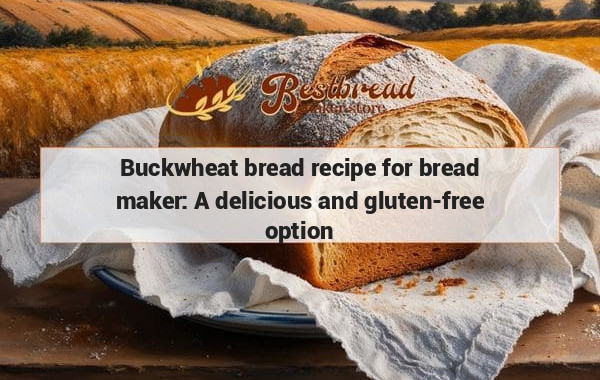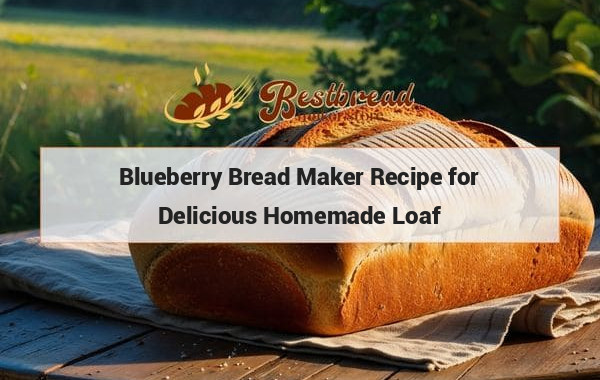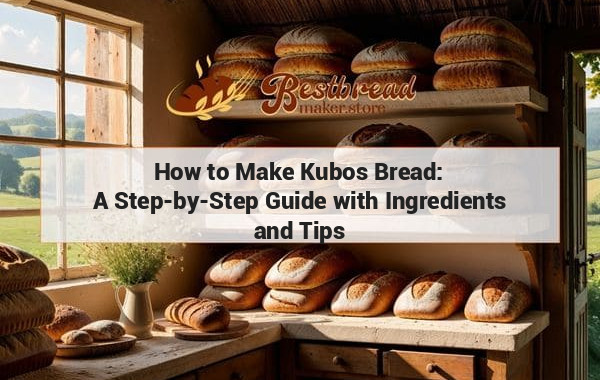How to Make Delicious Veggie Bread at Home - A Step-by-Step Guide
To make veggie bread, start by mixing grated vegetables like zucchini, carrots, and spinach into your bread dough. Add herbs like parsley and garlic for extra flavor. Let the dough rise, then bake it in the oven until golden brown. Enjoy this nutritious and delicious veggie bread as a side dish or snack. It's a great way to sneak in some extra vegetables into your diet.
Making veggie bread at home is a fantastic way to incorporate more vegetables into your diet while enjoying a delicious, homemade loaf. This article will guide you through the entire process, from selecting the best ingredients to achieving the perfect texture and flavor.
Key Takeaways: Veggie bread is a healthy, versatile option for homemade baking. It incorporates vegetables like carrots, zucchini, and spinach, offering both flavor and nutrition. Mastering the right moisture balance and using a reliable bread maker can lead to a perfect loaf every time.
Why Veggie Bread is a Great Choice for Home Bakers
Veggie bread offers a tasty and nutritious alternative to regular bread. By adding vegetables like carrots, zucchini, spinach, or even beets, you can boost the nutritional value of your bread without sacrificing taste. The vegetables add natural sweetness, moisture, and a unique texture that elevates the overall eating experience.
How Veggie Bread Enhances Your Diet
Adding vegetables to your bread means incorporating important nutrients like vitamins A, C, and K, as well as fiber. These nutrients contribute to a well-balanced diet, support digestion, and help maintain overall health. Veggie bread is especially beneficial for children and picky eaters, as it provides a sneaky way to include more vegetables in their meals.
Step-by-Step Guide on How to Make Veggie Bread
Making veggie bread may sound complicated, but it’s quite simple once you have the right ingredients and a good bread maker. Follow these steps for a delicious and nutritious loaf.
Ingredients You’ll Need
- Flour – Use whole wheat or all-purpose flour as the base for your bread.
- Vegetables – Grated carrots, zucchini, spinach, or beets work best. Ensure they are fresh and well-drained to avoid too much moisture.
- Yeast – Active dry yeast or instant yeast will help the bread rise properly.
- Water or Milk – These liquids activate the yeast and moisten the dough.
- Olive Oil – Adds richness and helps achieve a softer crust.
- Salt and Sugar – Salt for flavor and sugar to feed the yeast.
- Optional Add-ins – Nuts, seeds, or herbs can enhance the flavor and texture.
Step 1: Prepare Your Vegetables
Begin by grating your chosen vegetables. Carrots, zucchini, and spinach are popular options. After grating, squeeze out excess water from the vegetables to prevent your bread from becoming soggy.
Step 2: Mix the Dry Ingredients
In a large bowl, combine your flour, yeast, salt, and sugar. Stir these dry ingredients together to ensure even distribution.
Step 3: Incorporate the Vegetables
Slowly fold in the grated vegetables, making sure they are evenly mixed throughout the dough. This will ensure each slice of bread contains a good balance of vegetables and dough.
Step 4: Add Wet Ingredients
Incorporate water or milk and olive oil into the dry mixture. Stir until a dough begins to form. Knead the dough for about 10 minutes until it becomes smooth and elastic.
Step 5: Let the Dough Rise
Place the dough in a greased bowl, cover it with a clean towel, and let it rise in a warm place for about an hour or until it doubles in size. This is a crucial step for a light, airy loaf.
Step 6: Bake the Bread
Once the dough has risen, transfer it to a greased loaf pan or shape it into a free-form loaf. Bake in a preheated oven at 350°F (175°C) for about 30-40 minutes. The bread is done when it sounds hollow when tapped on the bottom.
Choosing the Best Bread Maker for Veggie Bread
A reliable bread maker can make the process of making veggie bread even easier. There are various models available that offer settings specifically designed for vegetable-rich doughs. When selecting a bread maker, consider the following:
- Capacity – Choose a model that fits the size of loaf you want to make.
- Dough Settings – Look for a machine with versatile settings, including one for dense or moist doughs, like those with added vegetables.
- Ease of Use – A simple interface and easy-to-clean components will make your bread-making experience more enjoyable.
For a great selection of bread makers, you can visit bestbreadmaker.store, where you'll find reviews and recommendations for top models suited for different baking needs.
How to Store and Serve Veggie Bread
Veggie bread is best served fresh, but it can be stored for up to a week if properly sealed in an airtight container. You can also freeze veggie bread for up to three months. To serve, try pairing it with homemade dips, soups, or simply toast it with a bit of butter.
Tips for Storing Veggie Bread
To prevent your bread from becoming stale, wrap it tightly in plastic wrap or store it in a bread box. If freezing, slice the bread beforehand so you can easily defrost and toast individual slices as needed.
Nutritional Benefits of Veggie Bread
Adding vegetables to your bread doesn’t just add flavor—it boosts the nutritional profile as well. Veggie bread is often rich in dietary fiber, antioxidants, and essential vitamins. By using whole wheat flour, you can further increase the fiber content, making it an excellent choice for those looking to maintain a healthy diet.
A Healthier Alternative to Store-Bought Bread
Most store-bought breads contain preservatives and added sugars. By making your own veggie bread, you control what goes into it, ensuring a healthier, fresher product. It’s perfect for those with dietary restrictions or those looking to eat cleaner, homemade food.
Frequently Asked Questions
1. Can I use different types of vegetables in veggie bread?
Yes, you can mix and match vegetables like carrots, zucchini, spinach, or even pumpkin. Just ensure that the vegetables are well-drained to avoid adding excess moisture to the dough.
2. How do I prevent my veggie bread from becoming too dense?
The key to preventing dense bread is properly draining the vegetables and allowing enough time for the dough to rise. Using the right amount of yeast and not over-kneading the dough also helps.
3. Can I make veggie bread without a bread maker?
Yes, veggie bread can be made by hand. The process remains the same, but you’ll need to knead the dough manually and bake it in a conventional oven.
4. How long does veggie bread last?
Veggie bread typically lasts for 4-5 days when stored at room temperature in an airtight container. You can also freeze it for up to three months.
5. What are the health benefits of veggie bread?
Veggie bread is packed with vitamins, minerals, and fiber. It’s a great way to sneak more vegetables into your diet and offers a healthier alternative to traditional bread, especially when made with whole wheat flour.
By following this guide, you’ll have all the tools you need to create a delicious loaf of veggie bread. From choosing the right vegetables to using the best bread maker, making veggie bread at home is a rewarding experience that’s both fun and nutritious.








